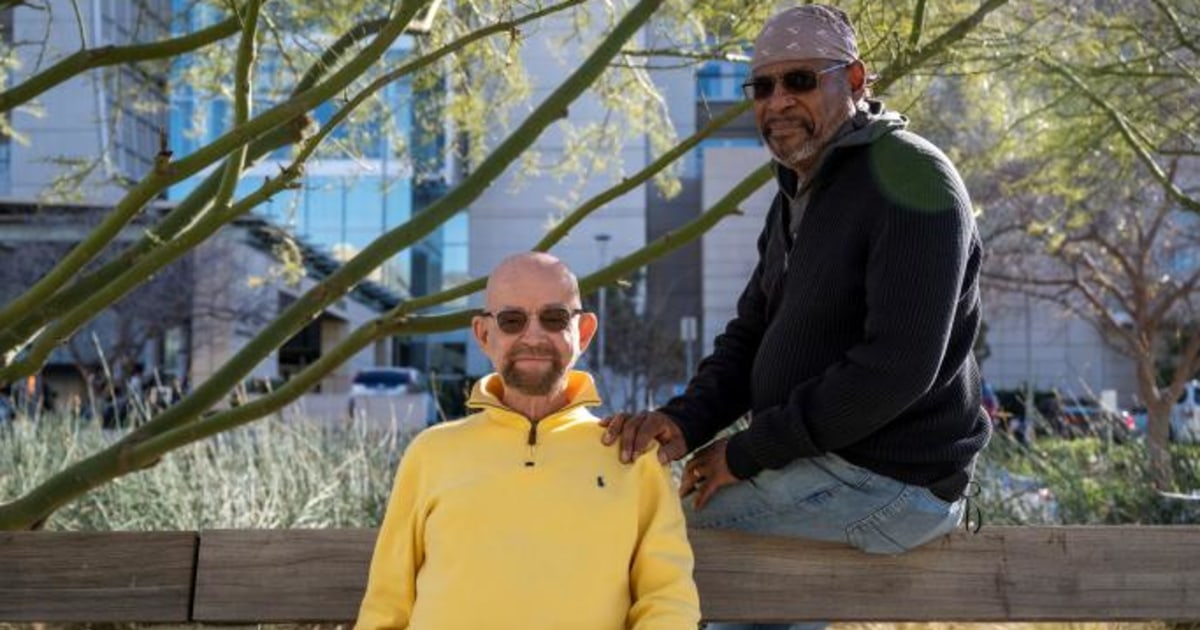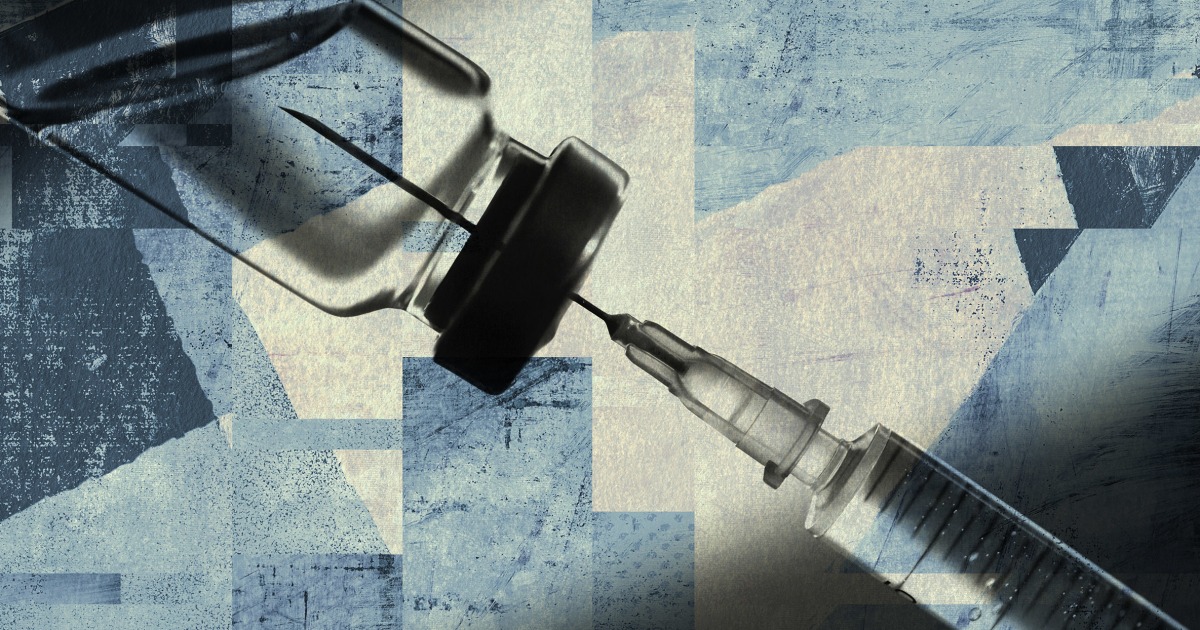By Benjamin
RyanNBC News
An American scientific team announced on Tuesday that it has possibly cured the human immunodeficiency virus (HIV) in a person for the first time.
Building on the successes and failures of other researchers, these scientists used a cutting-edge approach to stem cell transplantation that they hope can be applied to more people.
The
patient from New York,
as she is known to maintain her privacy, thus joined the small group of people who have been cured of HIV, made up of three men so far.
The researchers also know of two women whose immune systems uniquely beat HIV on their own.
File image of HIV research. Westend61 / Getty Images/Westend61
Carl Dieffenbach, director of the AIDS division of the National Institute of Infectious Diseases, which funds these researchers, told NBC News that the accumulation of repeated apparent triumphs in curing HIV "continues to give hope."
"It is important that there continue to be successes," he said.
In the first case of what was ultimately considered a successful cure for HIV, researchers treated American Timothy Ray Brown for acute myeloid leukemia (AML).
The man received a stem cell transplant from a donor who had a rare genetic abnormality that gives immune cells targeted by HIV a natural resistance to the virus.
The strategy in Brown's case, first made public in 2008, has apparently cured HIV in two other people.
But it has also failed on several occasions.
FDA Approves First Long-Acting Injectable HIV Prevention Drug
Dec. 22, 202100:31
This therapeutic process seeks to replace the immune system of an individual with that of another person, treating their cancer and curing their HIV at the same time.
To do this, doctors must first destroy the original immune system with chemotherapy and sometimes radiation.
The hope is that this will also destroy as many immune cells as possible that still silently harbor HIV despite effective antiretroviral treatment.
As long as the transplanted HIV-resistant stem cells engraft correctly, any new viral copies that may arise from any remaining infected cells will be unable to infect any other immune cells.
Experts stress that it is unethical to try to cure HIV with a stem cell transplant because they consider it a toxic and sometimes deadly procedure in anyone who does not have a life-threatening cancer or other condition that already makes them a candidate for such risky treatment.
World AIDS Day: this is how the preventive vaccine project against HIV advances
Dec. 1, 202104:50
Deborah Persaud, a pediatric infectious disease specialist at Johns Hopkins University School of Medicine, who chairs the scientific committee behind the new case study (the International Maternal-Pediatric AIDS Clinical Trials Network), said while are "very excited" about the new possible cure for HIV, the stem cell treatment method "is still not a feasible strategy for all but a handful of the millions of people living with HIV."
Pushing the limits of science
Yvonne J. Bryson, a pediatric infectious disease specialist at the David Geffen School of Medicine at UCLA, described the new case study Tuesday at the annual Retroviruses and Opportunistic Infections conference.
The
New York patient
, who received her treatment at the city's New York-Presbyterian Weill Cornell Medical Center, was diagnosed with HIV in 2013 and with leukemia in 2017.
Bryson and Persaud have partnered with a network of other researchers to conduct laboratory tests to evaluate the woman.
At Weill Cornell, Drs. Jingmei Hsu and Koen van Besien, from the stem cell transplant program, joined Dr. Marshall Glesby, an infectious disease specialist, in patient care.
Why the COVID vaccine was found in months and there is still no one for HIV
Nov. 30, 202101:55
This team has long been trying to mitigate the considerable challenge researchers face in finding a donor whose stem cells can treat a patient's cancer and cure their HIV.
Traditionally, such a donor must be sufficiently human leukocyte antigen (HLA) matched to maximize the chance that the stem cell transplant will engraft well.
The donor must also have the rare genetic abnormality that confers resistance to HIV.
This genetic abnormality occurs largely in people of northern European descent, and even among the natives of that area, in a proportion of only about 1%.
Therefore, for those without significant similar ancestry, the chance of finding a suitable stem cell donor is especially low.
In the United States, African Americans represent 40% and Hispanics 25% of the approximately 1.2 million people with HIV;
whites account for 28%.
cutting edge treatment
The procedure used to treat
the New York patient , known as a
haplo-cord
transplant,
was developed by the Weill Cornell team to expand cancer treatment options for people with blood malignancies who lack HLA-matched donors. identical.
First, the cancer patient receives a transplant of umbilical cord blood, which contains stem cells that make up a powerful early immune system.
A day later, she receives a larger graft of adult stem cells.
Adult stem cells flourish rapidly, but over time they are entirely replaced by cells from the umbilical cord.
Compared to adult stem cells, umbilical cord blood is more adaptable, typically requires less HLA matching for successful cancer treatment, and causes fewer complications.
However, cord blood typically does not produce enough cells to be effective as a cancer treatment in adults, so cord blood transplants have traditionally been limited to pediatric oncology.
"I felt discriminated against."
A Latino who has lived with HIV for 35 years invites early detection
Dec. 1, 202103:24
In
haplo-cord
transplants, additional stem cell transplantation from an adult donor, providing a number of cells, can help make up for a shortage of cord blood cells.
"The role of adult donor cells is to speed up the early engraftment process and make transplantation easier and safer," Van Besien said.
In the case of
the New York patient,
of mixed ancestry, the Weill Cornell team and colleagues found the genetic abnormality resistant to HIV in the umbilical cord blood of a child donor.
They matched a transplant of those cells with stem cells from an adult donor.
Both donors were only partially HLA-matched to the woman, but the combination of the two transplants made it possible.
“We estimate that there are about 50 patients a year in the US who could benefit from this procedure,” van Besien said of the use of
haplo-cord
transplantation as a therapy to cure HIV.
"The ability to use partially matched umbilical cord blood grafts greatly increases the likelihood of finding suitable donors for these patients," she added.
Another advantage of turning to umbilical cord blood is that cord blood banks are much easier to screen in bulk for the HIV resistance abnormality than the bone marrow registries from which oncologists find stem cell donors. .
HIV infection rates are higher among Hispanics and blacks, according to the CDC
June 4, 202100:41
Before the New York patient became a candidate for
haplo-cord
treatment , Bryson and his colleagues had already screened thousands of umbilical cord blood samples for the genetic abnormality.
The woman's transplant grafted very well.
She has been in remission from her leukemia for more than four years.
Three years after the transplant, she and her doctors stopped HIV treatment.
Fourteen months later, she still hasn't experienced any resurgence of the virus.
Multiple tests fail to detect any signs of replicating HIV in the woman's immune cells, nor can researchers detect HIV antibodies or immune cells programmed to hunt down the virus.
They also extracted immune cells from the woman and, in a laboratory experiment, tried to infect them with HIV, without success.









/cloudfront-eu-central-1.images.arcpublishing.com/prisa/KMEYMJKESBAZBE4MRBAM4TGHIQ.jpg)


